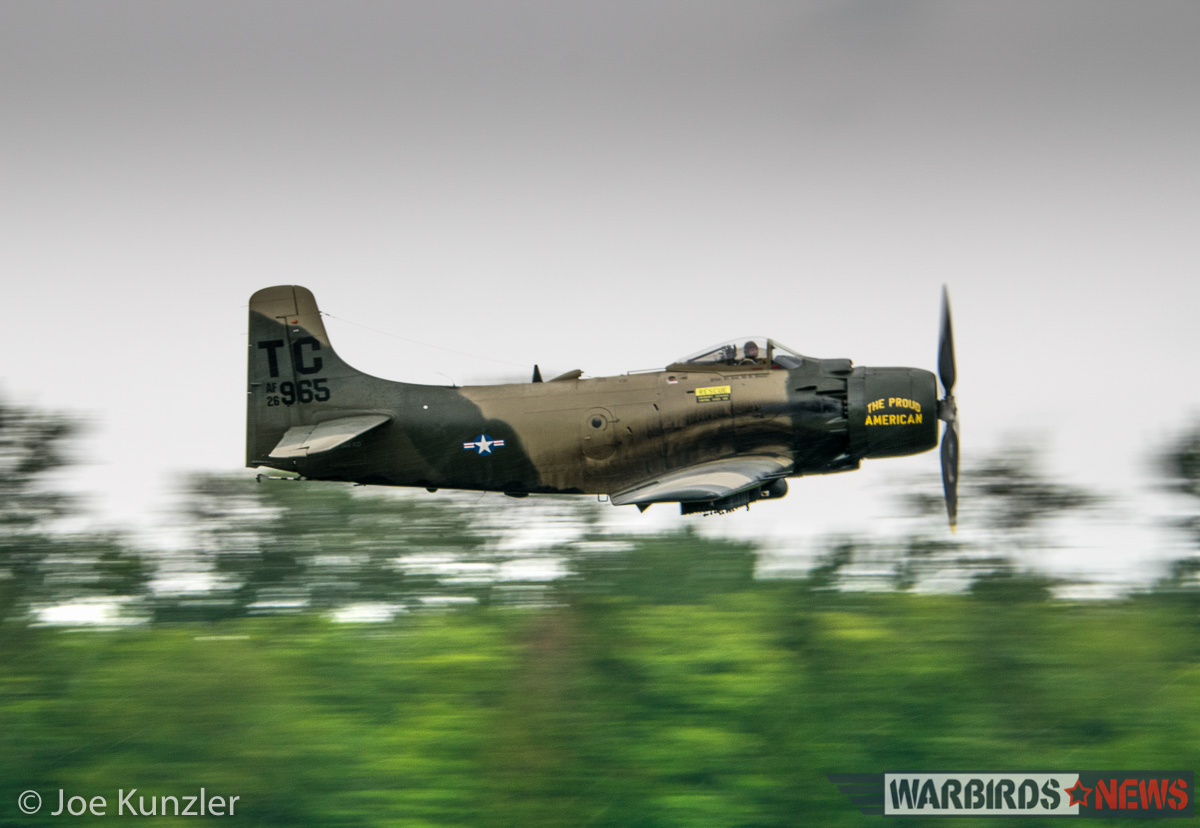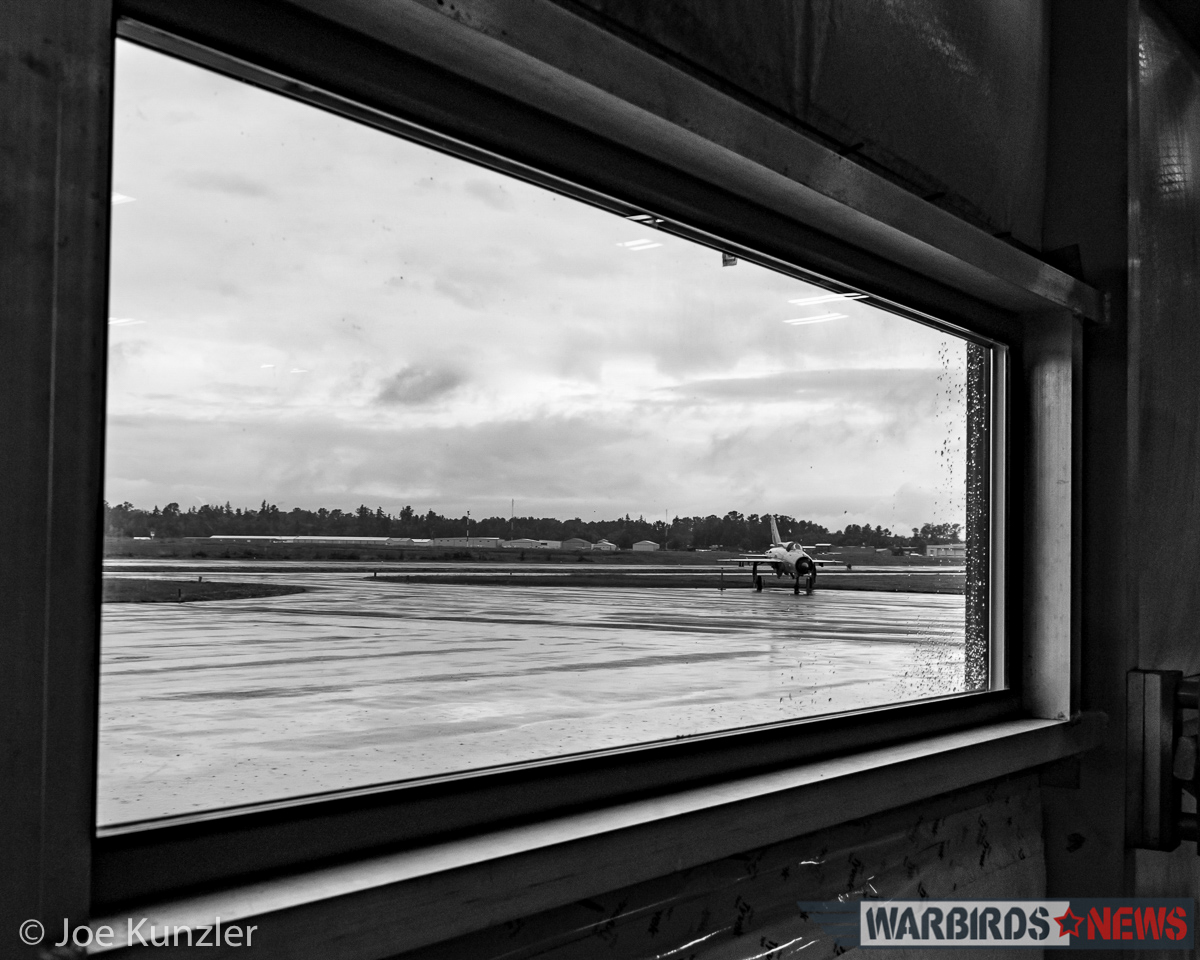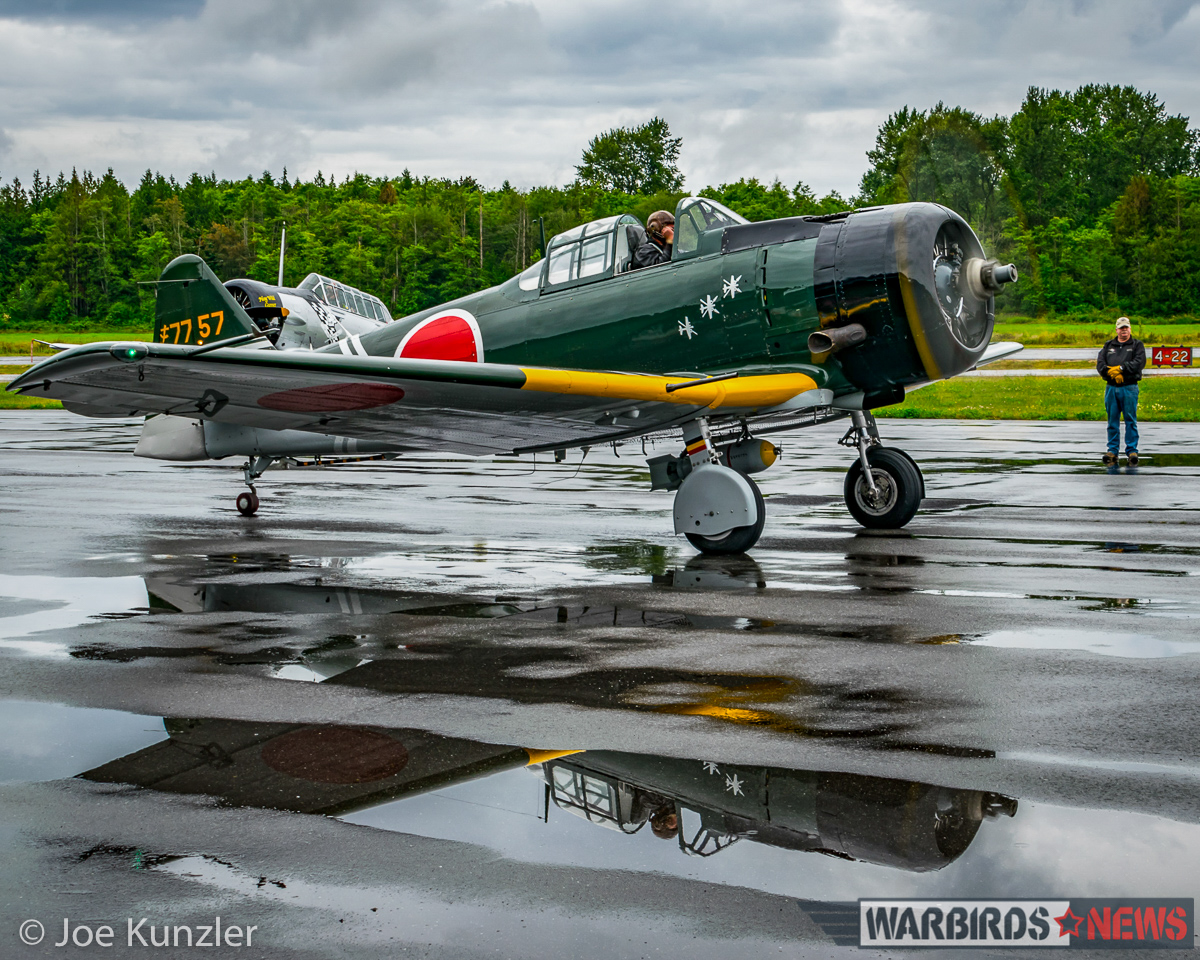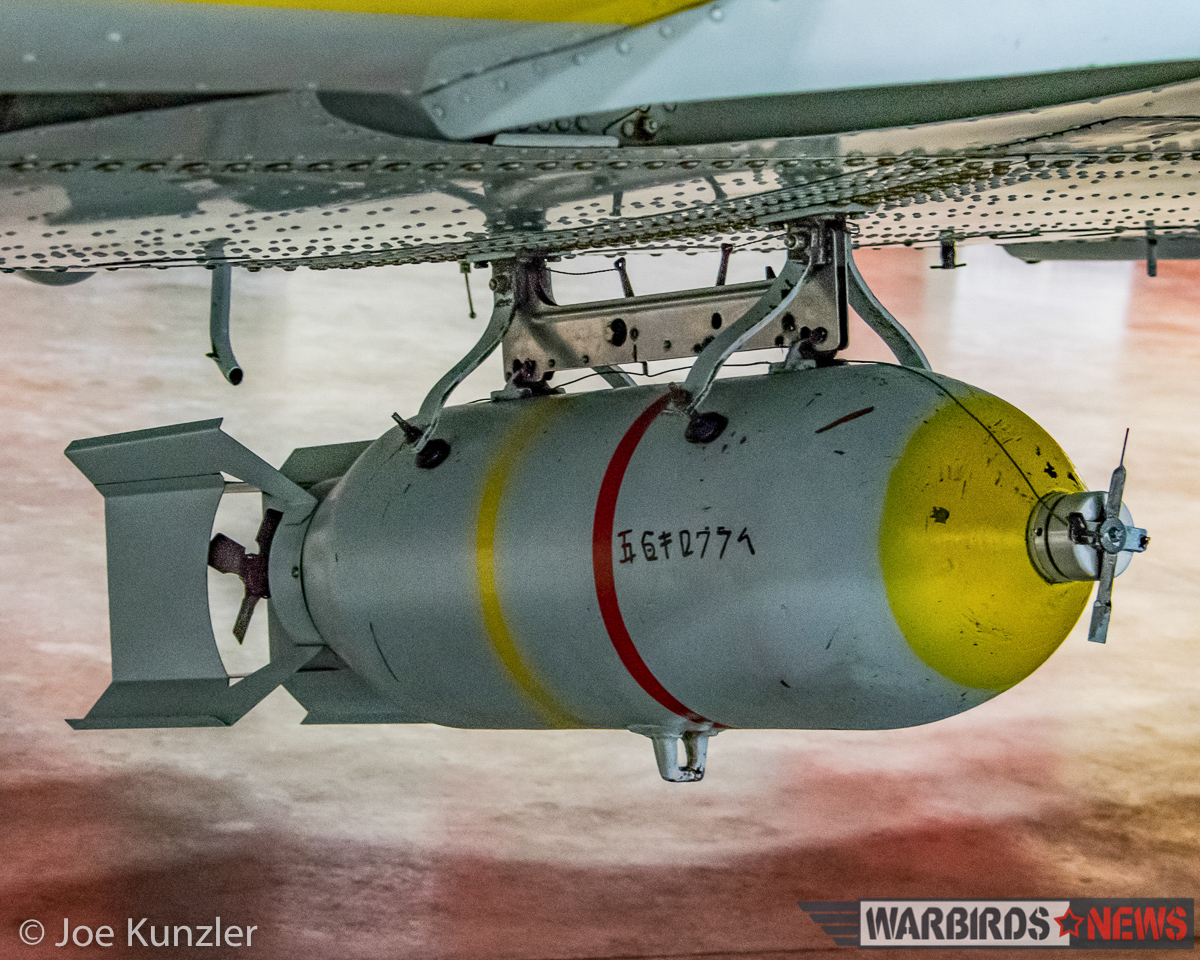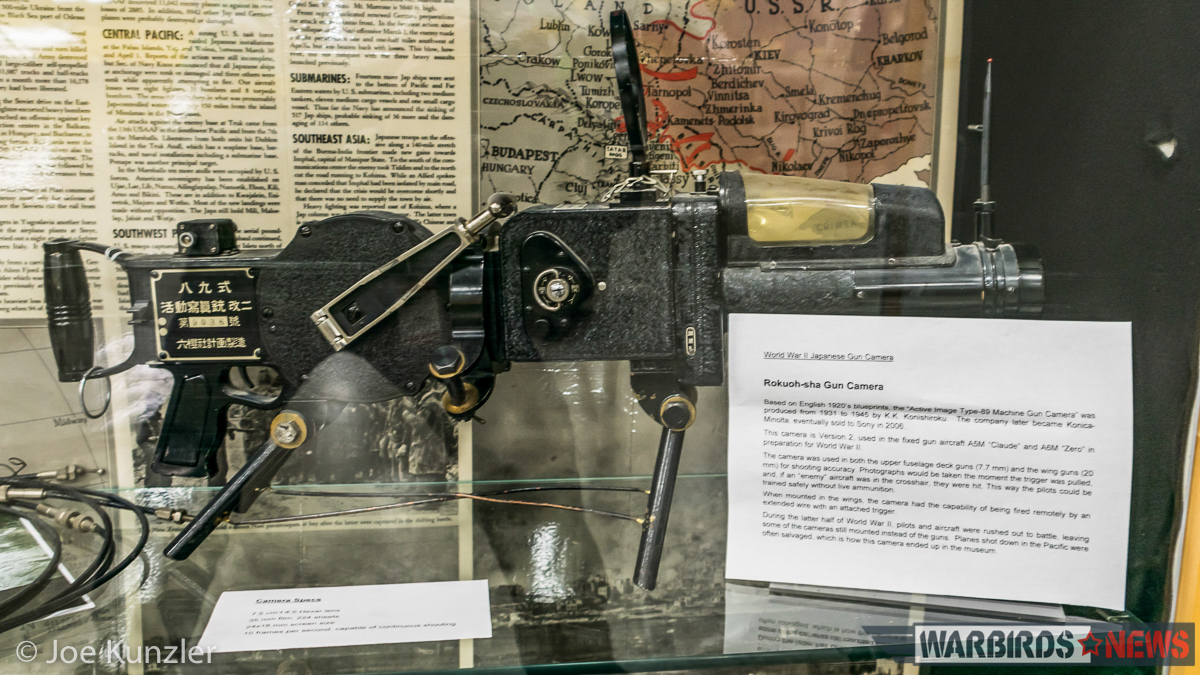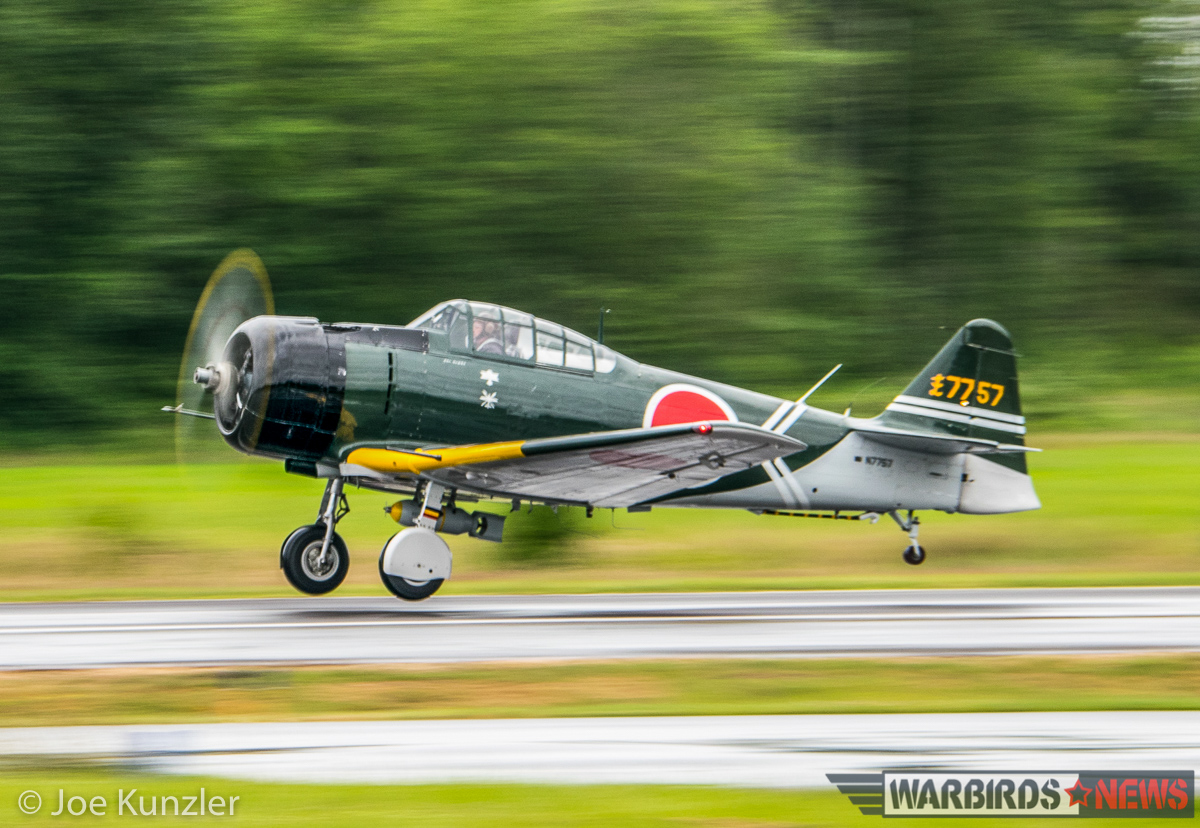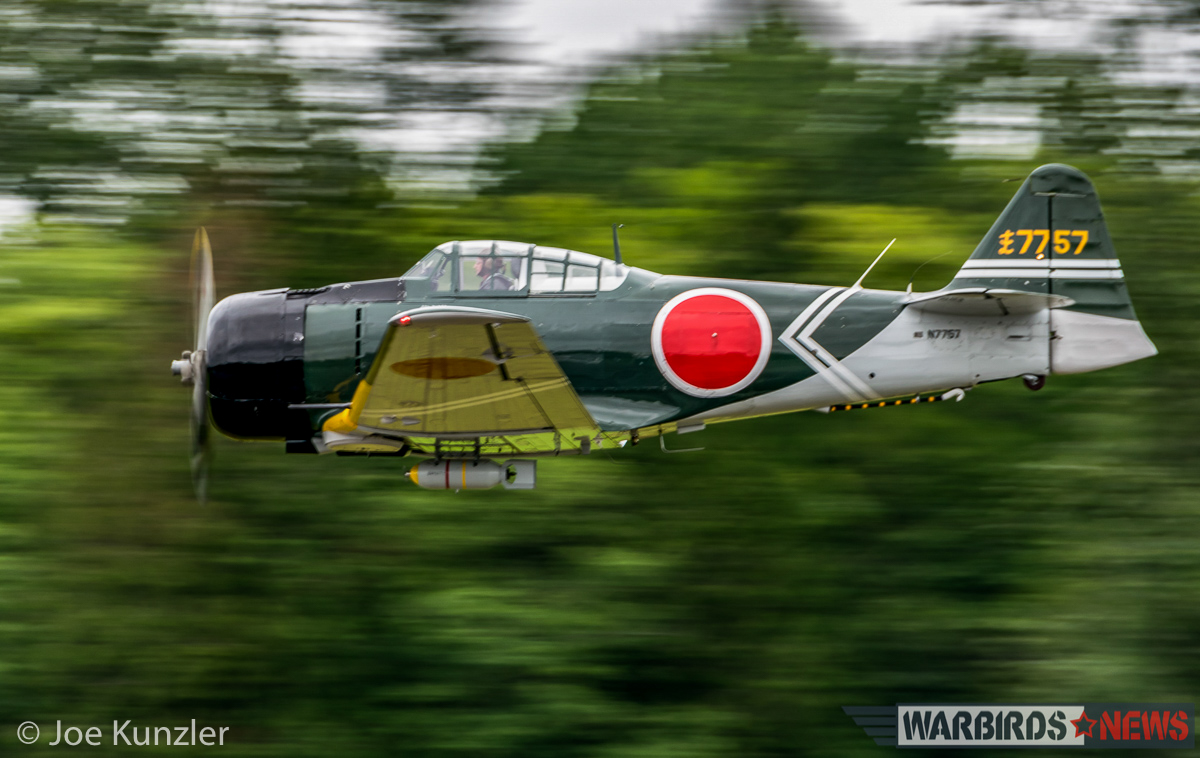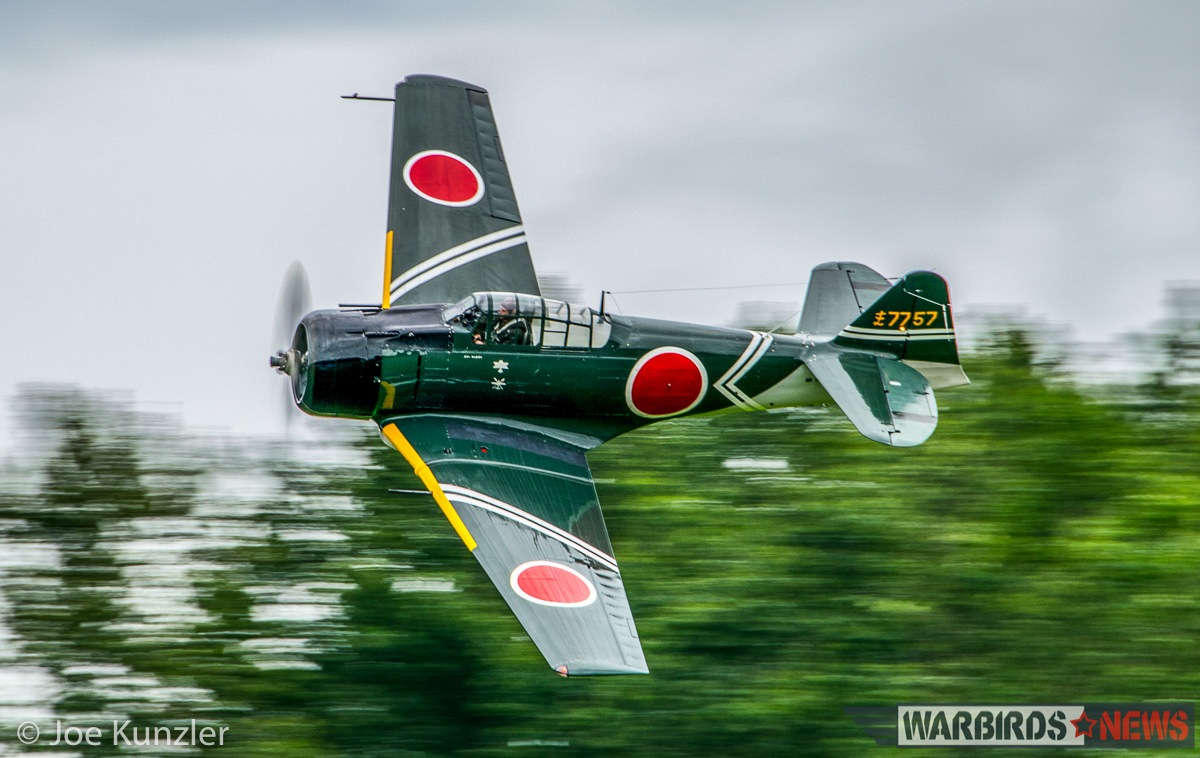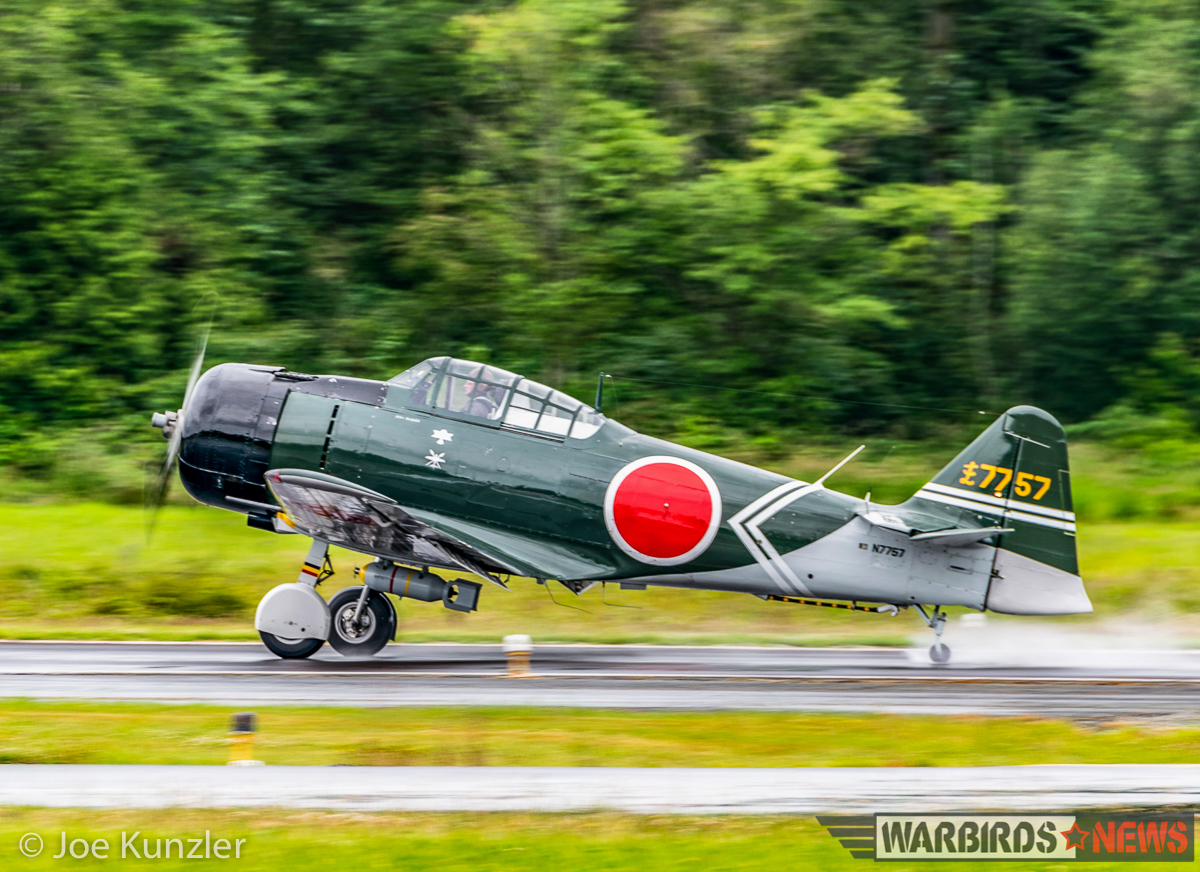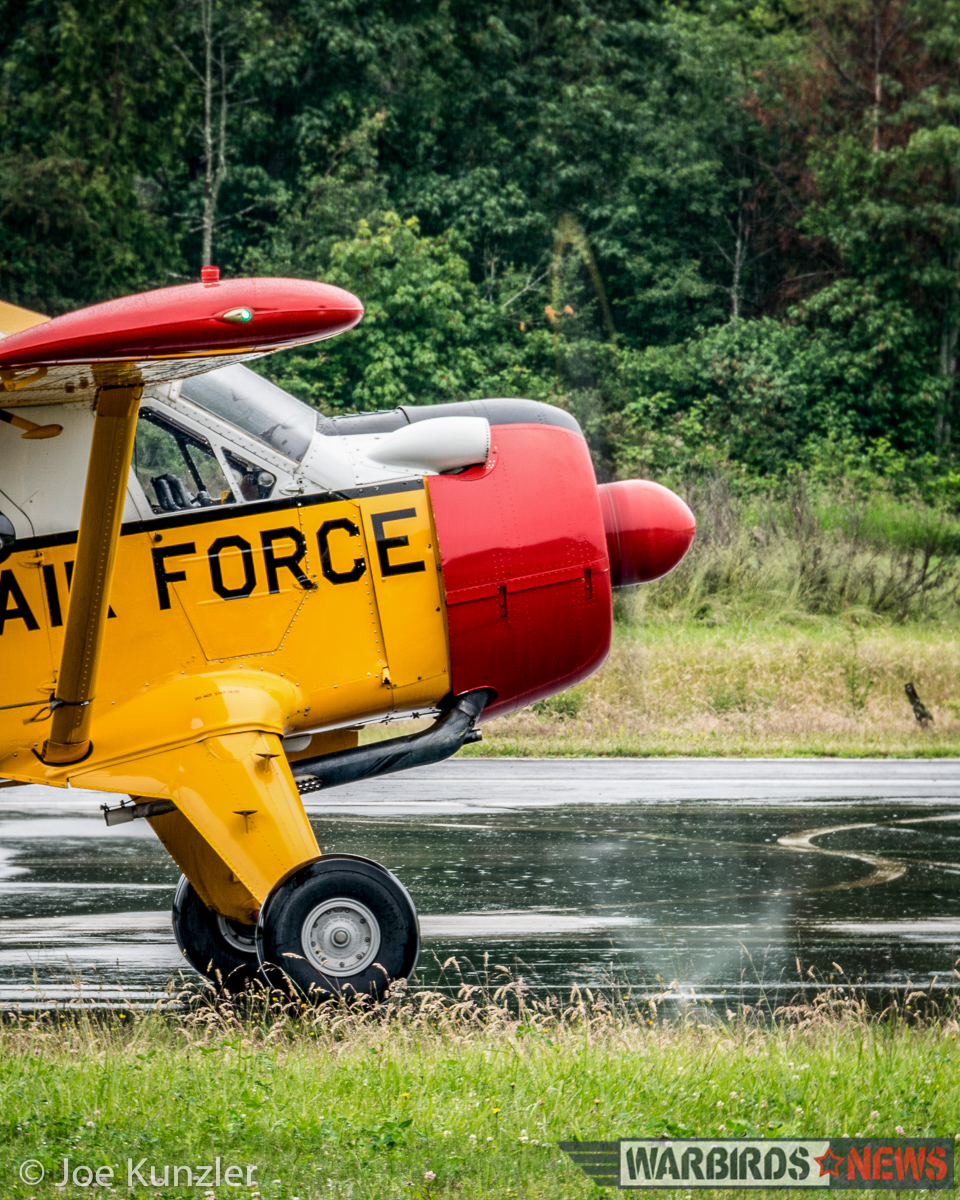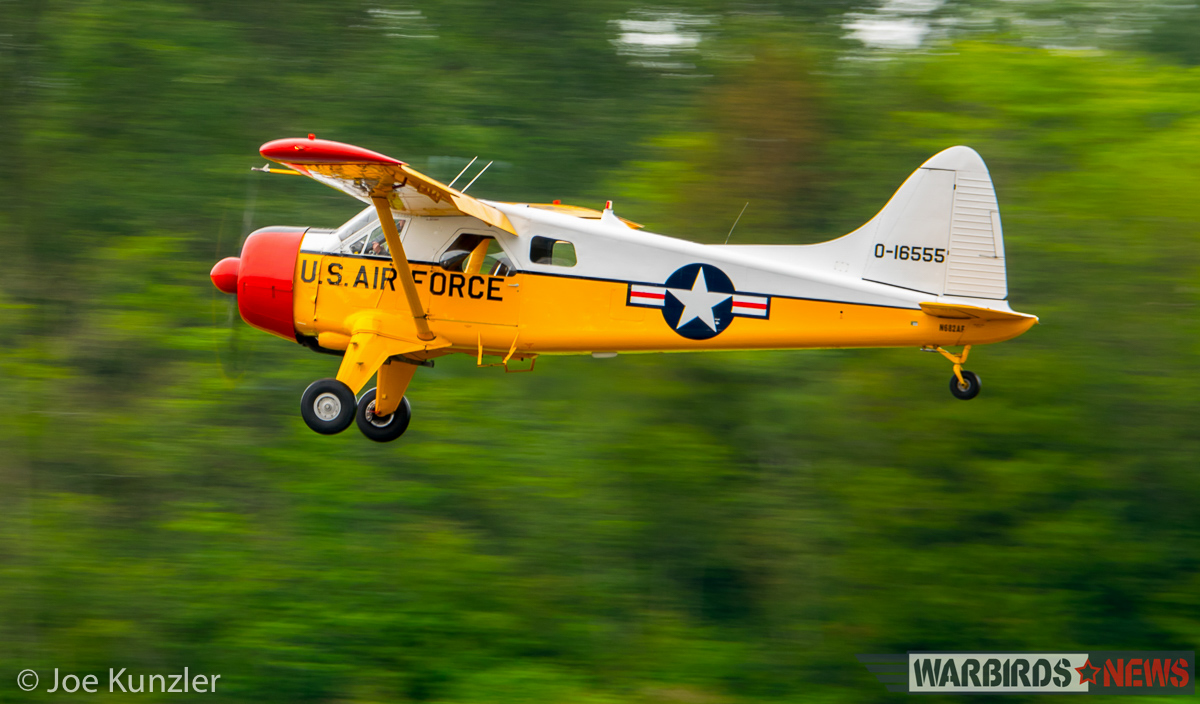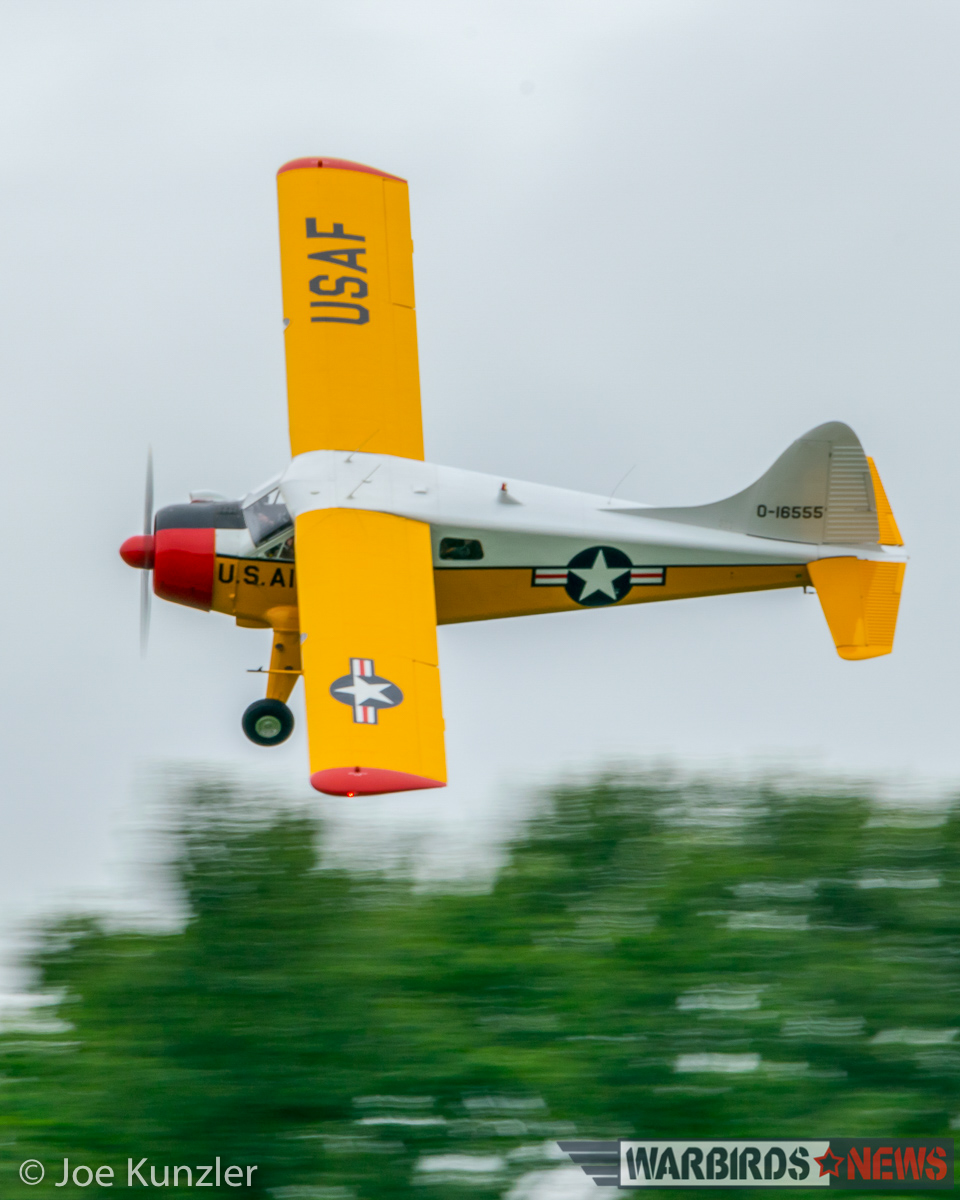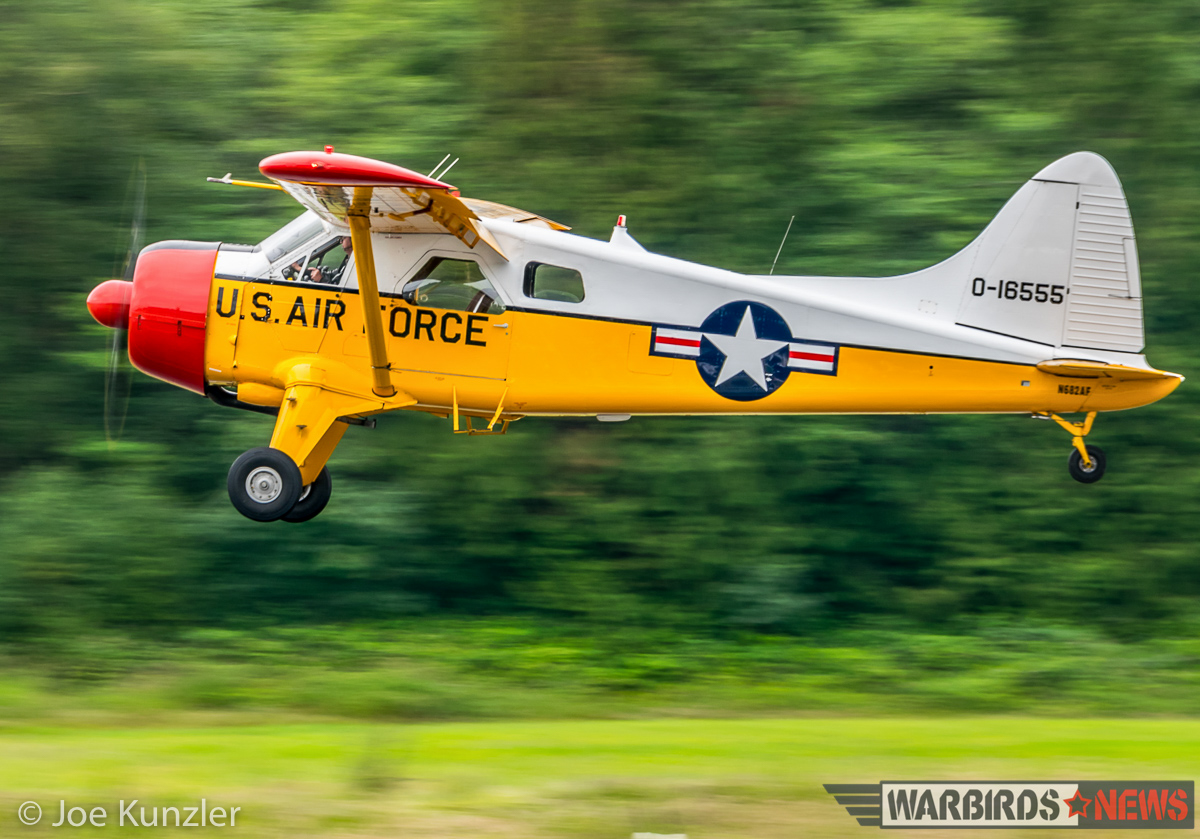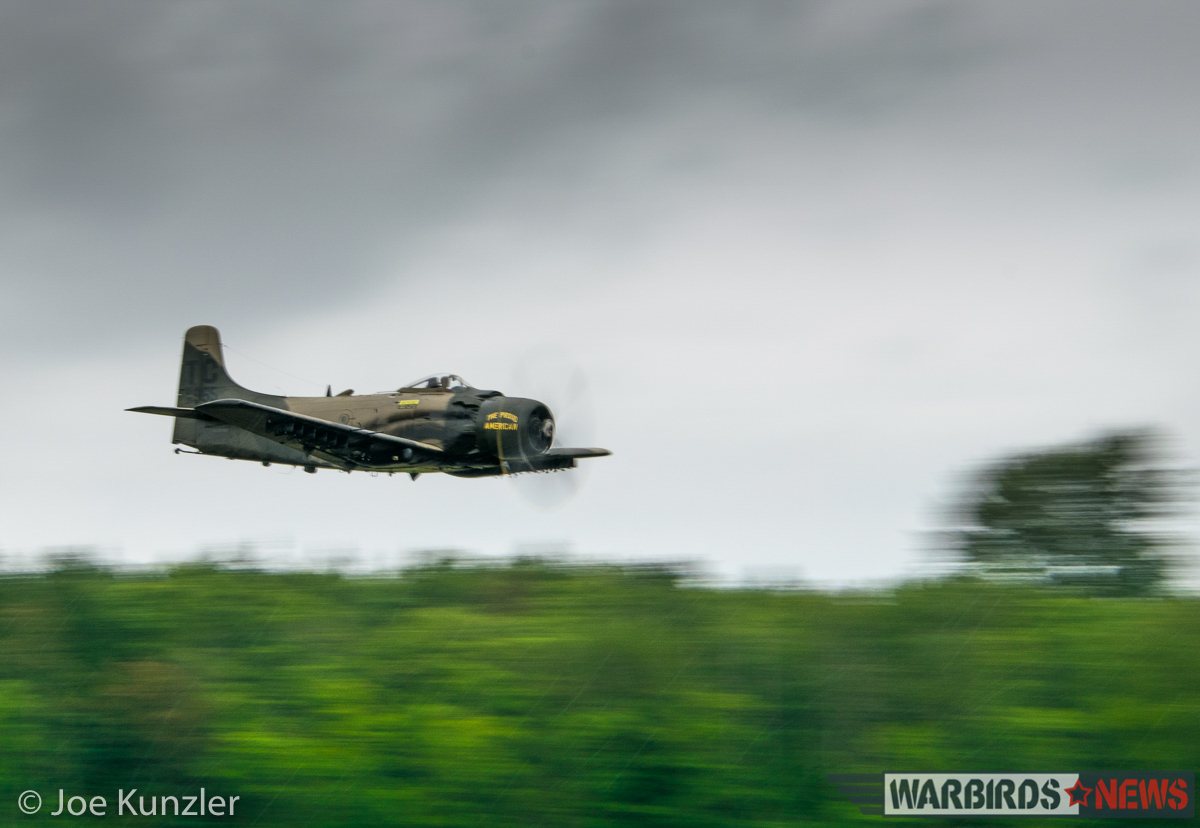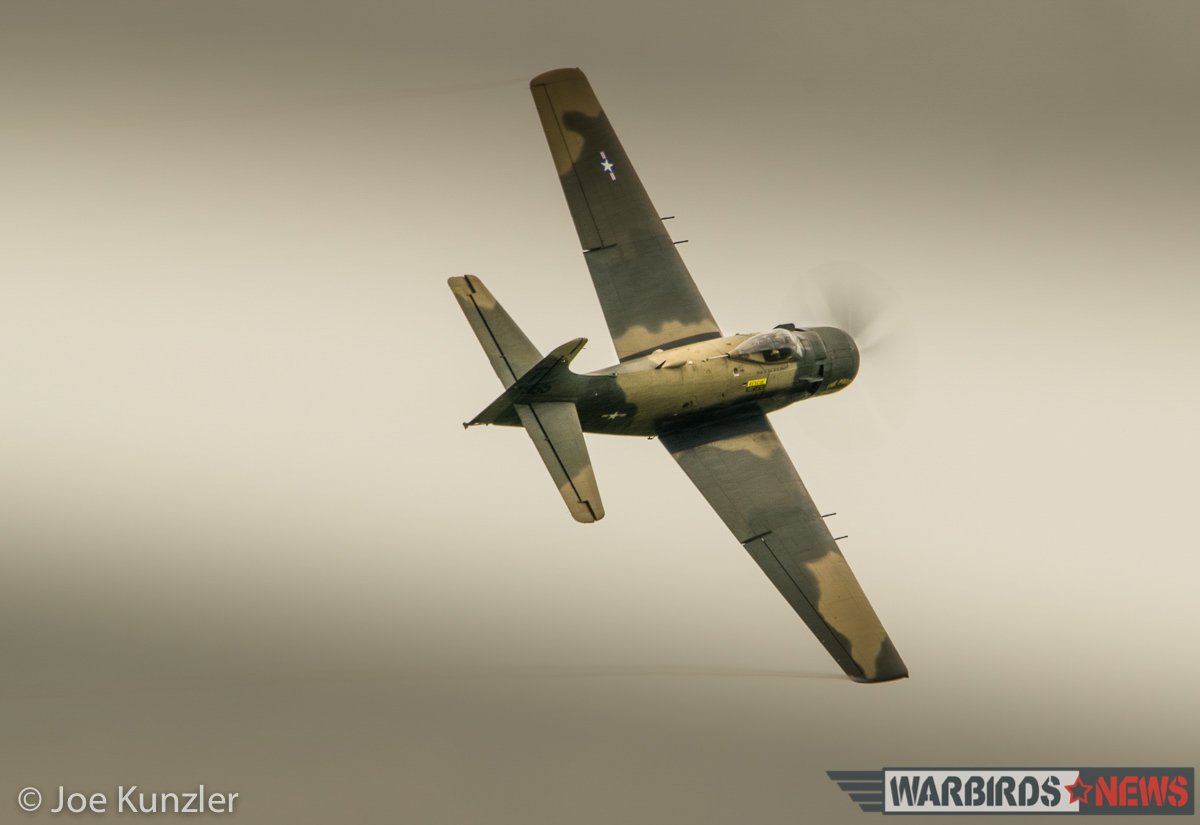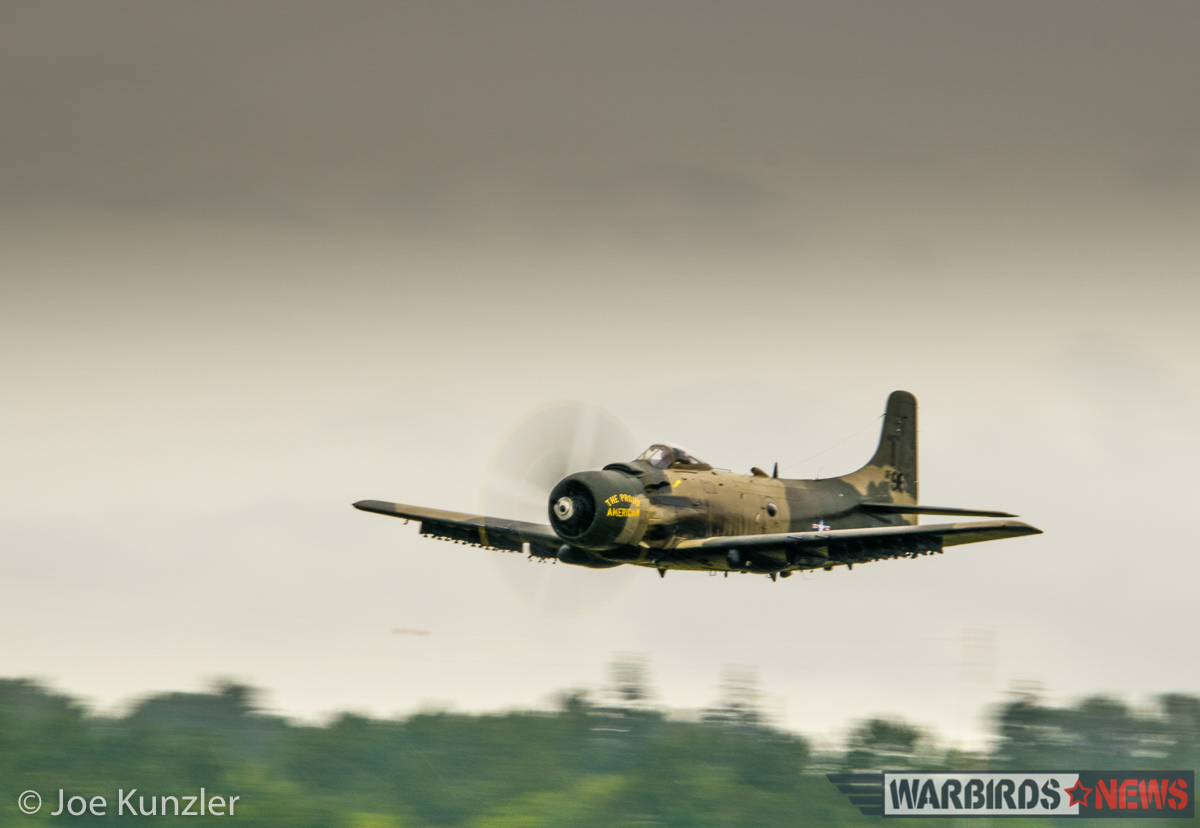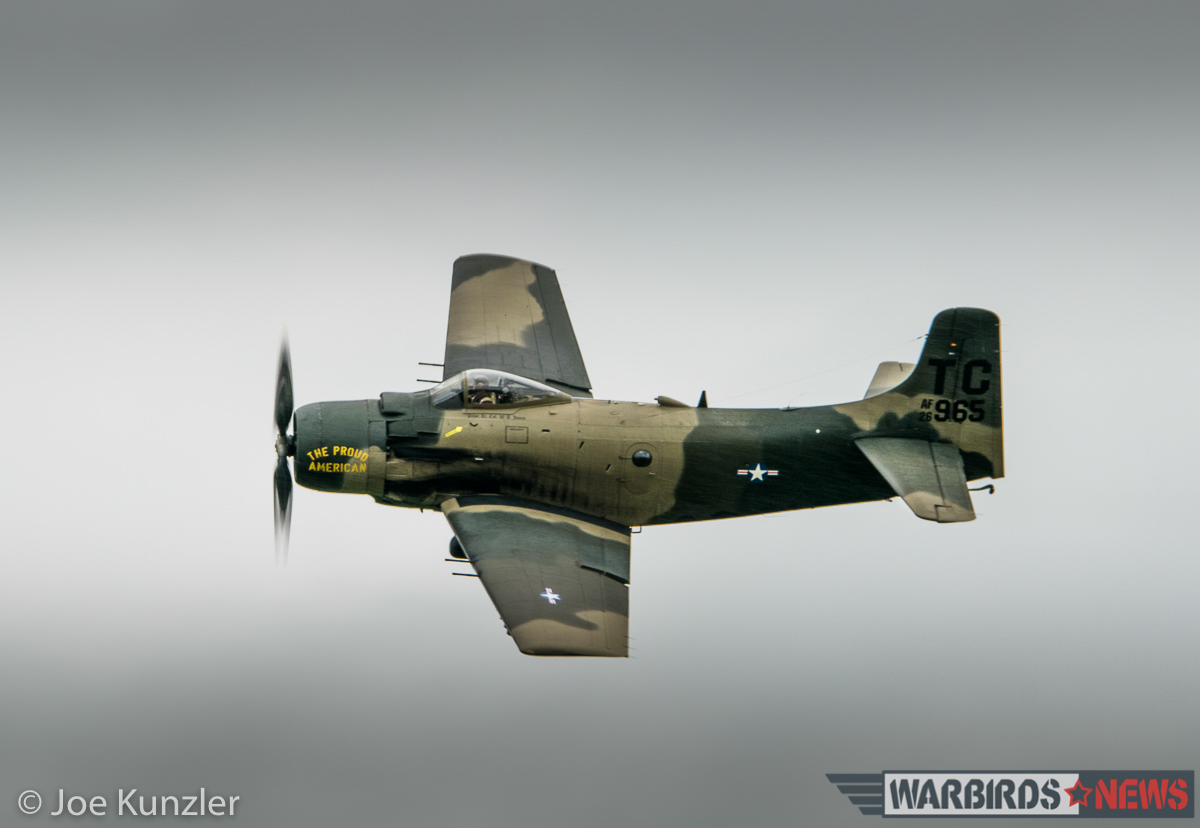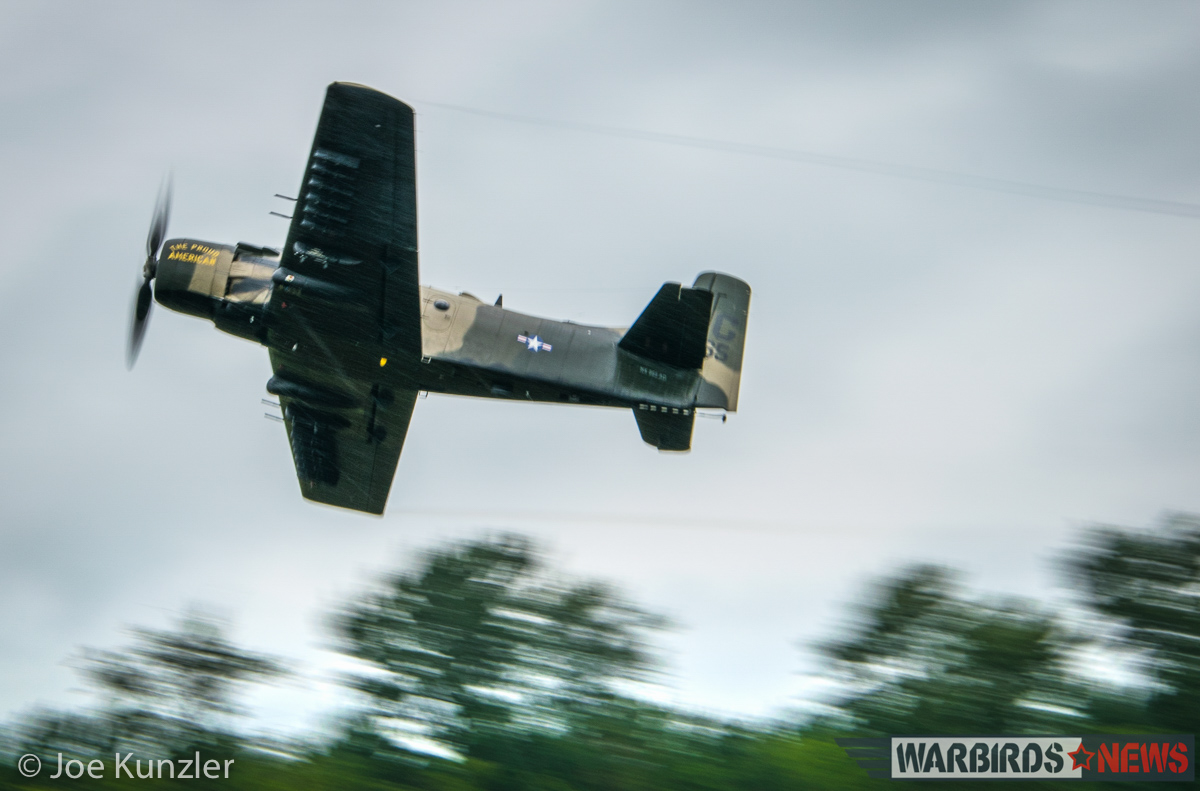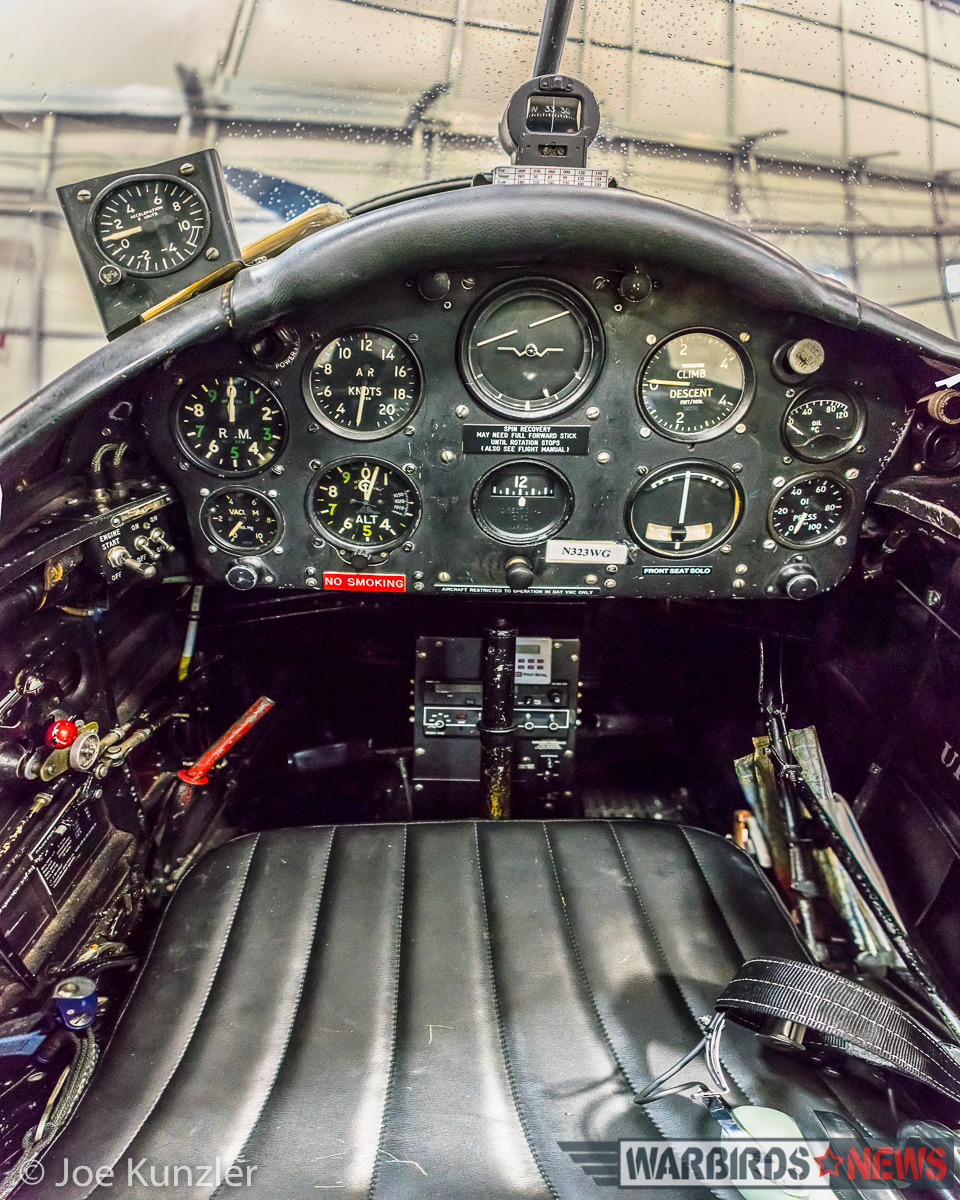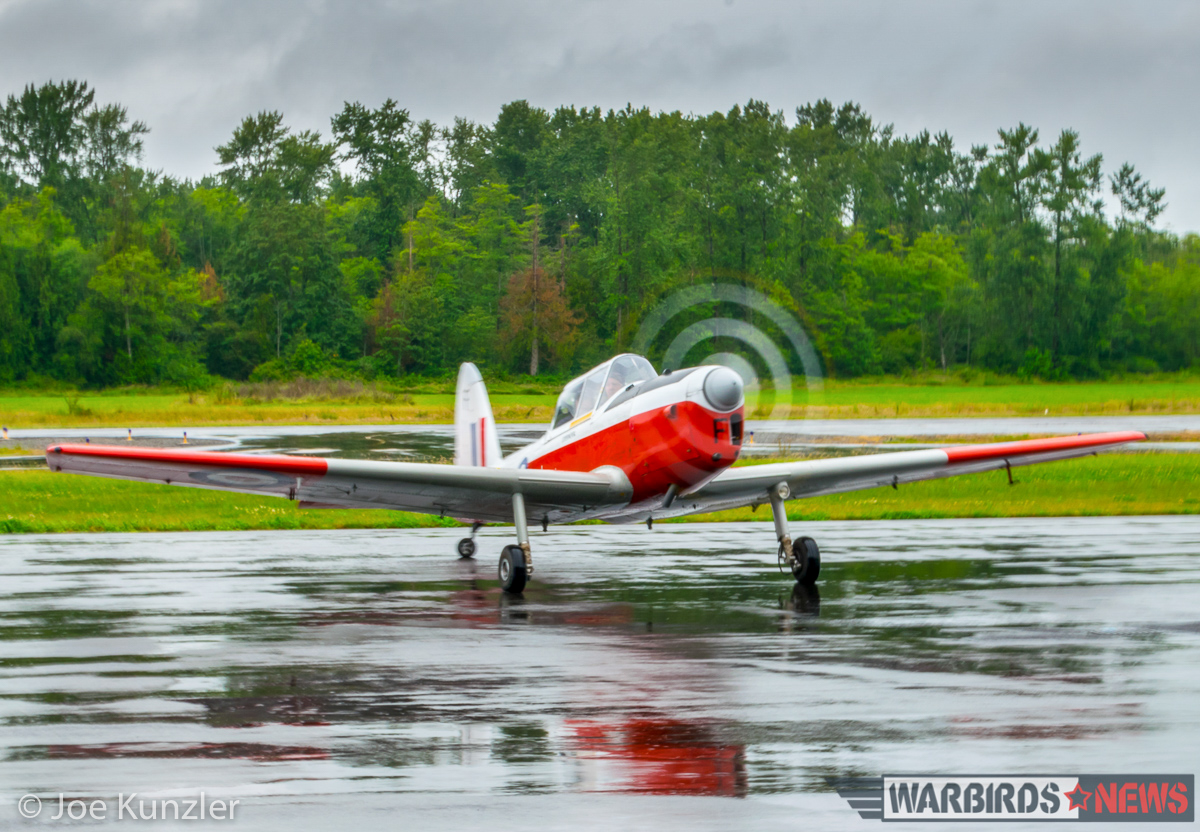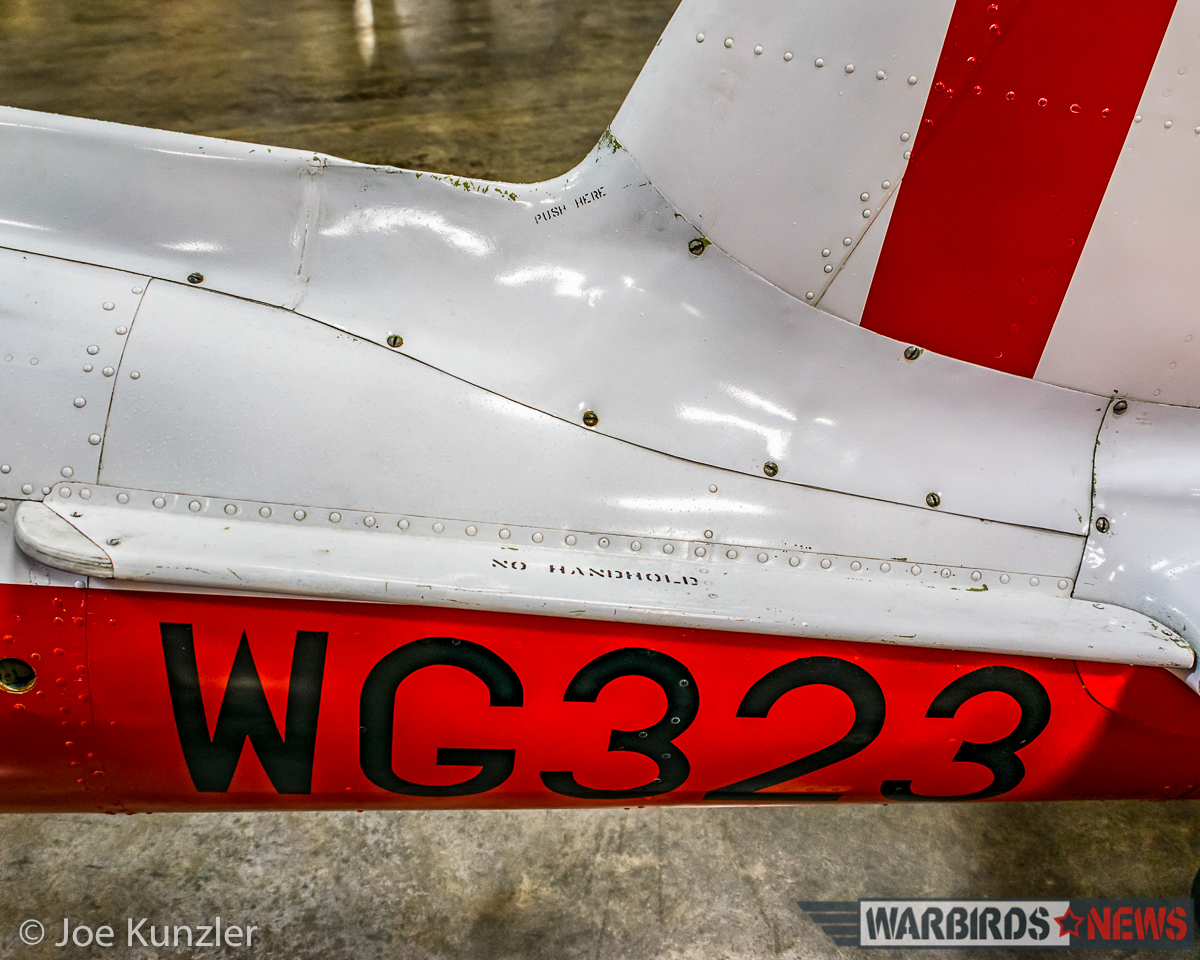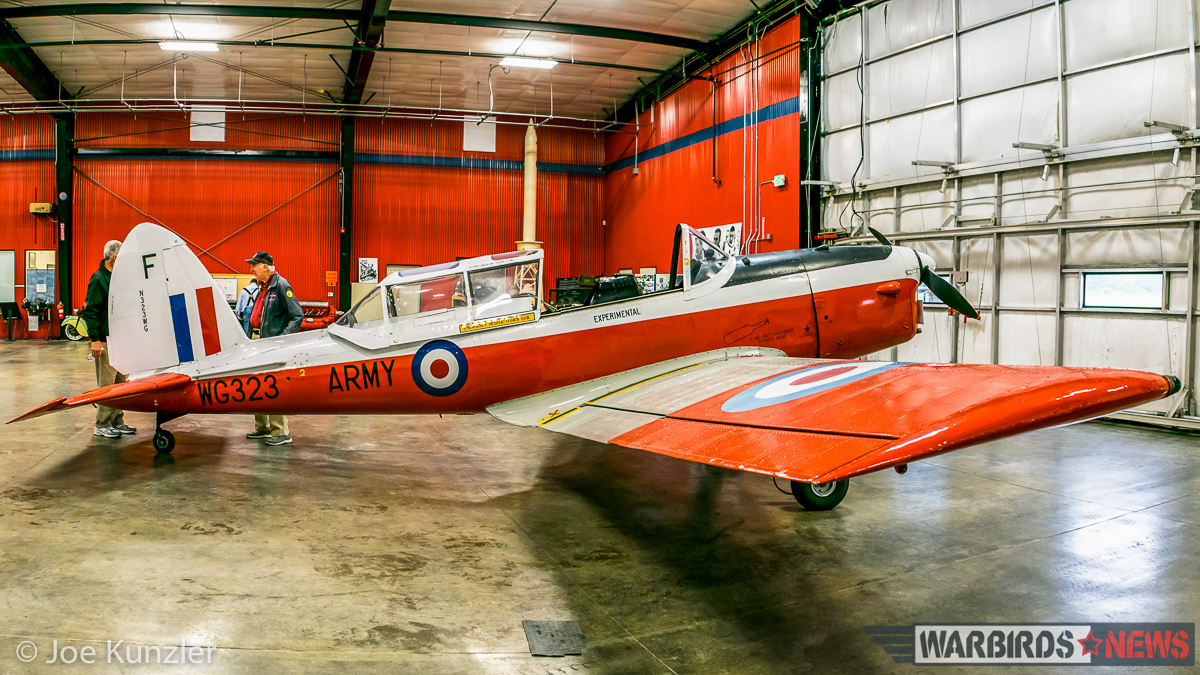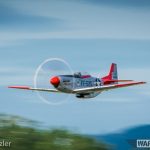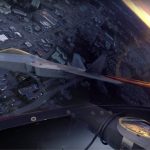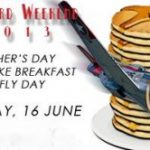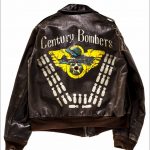From Rain to Skyraiding…
by Joe Kunzler
What began as a dark and gloomy Saturday morning on June 18th at the Heritage Flight Museum in Burlington, Washington had everyone uncertain if flight operations could take place for the monthly Fly Day, but the weather cleared enough to see three warbirds slicing through Skagitonian rain – along with a visiting DHC-2 Chipmunk.
At the 10 o’clock volunteer briefing, Executive Director Lt. Col. Greg Anders (USAF Ret’d) started the proceedings by noting that even if the rain prevented any flying from taking place, this Fly Day was a good opportunity to practice basic procedures for future events which will occur later this summer.
Meanwhile, the PBY Memorial Foundation sent a few gentlemen to gather up Pearl Harbor stories in collaboration with the Island County Historical Society and Heritage Flight Museum. The groups are looking for heretofore untold anecdotes and personal stories from the Japanese air raid on Pearl Harbor, so please consider this opportunity to submit your family stories if you have any for future preservation. The tales will be included in Pearl Harbor story books that will be on display at each of the Museums later this year. In addition, the organizations are working to incorporate these stories on their Websites and Facebook pages so that a broader public will have the opportunity to learn about these Pearl Harbor Day experiences.
Of course, sitting in the Heritage Flight Museum’s hangars was an unusual Canadian Harvard Mk.4, which until recently, was based with the Commemorative Air Force’s Dixie Wing in Georgia. The aircraft was heavily modified during the late 1960s to star as a facsimile Zero in the 1970 film “Tora! Tora! Tora!” which reenacted the Pearl Harbor attacks. This aircraft later featured in the movie “Midway”, the famed TV series “Baa Baa Black Sheep”, and in World War II-related documentaries. This remarkable aircraft put on a spirited display for the crowds during the June Fly Day.
According to Heritage Flight Museum, “[the ‘Zero’] started life as a Harvard Mark IV, a Canadian version of the venerable North American T-6 advanced trainer. The attention to detail in the conversion to an A6M2-21 Zero included the addition of 7.7mm machine guns over the engine cowl, a 20mm cannon on each wing, and a cockpit canopy modified to the specifications of the original Zero. Even the detail of adding the three bladed prop, a tail arresting hook, and converting the formerly fixed tail wheel to a fully functional retractable tail wheel were accomplished. The final product so closely resembles the Japanese Zero of WWII, in both size and form, only a trained eye can tell the difference.” Heritage Flight Museum staff and volunteers are also running a “Lost Aviators of Pearl Harbor” project (previously covered by WarbirdsNews) and are collecting artifacts and more in that regard such as an Interstate Cadet trainer and a Rokuoh-sha Gun Camera that would take a picture during air combat training of what was in the gunsight.
Also flying that day would be Apogee Flight’s Beaver. Being a robust bush plane, designed for harsh environmental conditions, it seemed the ideal choice to go out and test the weather. Designed by de Havilland Canada just after WWII the dHC-2 de Havilland Beaver enjoyed a long production run, and is still in use in great numbers to this day. While the last of roughly 1,600 Beavers rolled off the production line in 1967, there is a good chance that new examples may eventually take to the sky before too long. The US Army took delivery of nearly 1,000 Beavers, initially designated as the L-20 and later as the U-6. The US Air Force used nearly 200 U-6As as well. The Beaver on show at the June Fly Day is marked as a US Air Force U-6A, but originally started out life as US Army L-20 56-0412. With the rain still coming down, the U-6A Beaver was still able to show off its low and slow flying capability at high noon.
Conversely, to cap off the day’s flying, the Heritage Flight Museum’s AD-4NA Skyraider took off, and used it’s raw power to pull vapor trails out of the sky. This particular Skyraider is painted up in US Air Force colors of the 602nd Special Operations Squadron to commemorate Medal of Honor recipient, Lt. Col. William A. Jones III. During a rescue mission for a downed pilot, Jone’s Skyraider took several hits. Shrapnel tore open his ejection seat’s rocket, igniting the fuel, which in turn severely burned the pilot and knocked out his radio gear. Despite his injuries, Col.Jones managed to fly his aircraft ninety miles back to base and safely land it. Before receiving medical attention, he insisted on relaying positional information about the pilot they had been trying to rescue… information which proved vital in that man’s recovery. While Jones himself recovered from these injuries, he sadly lost his life a year later in another aircraft accident. The Heritage Flight Museum’s Skyraider is a former US Navy and French l’Armee de l’Air veteran. We will have more details about this aircraft in the future, but for now please enjoy the photographs of the fantastic flying by former USAF A-10 driver Lt. Colonel Greg Anders, Heritage Flight Museum Executive Director.
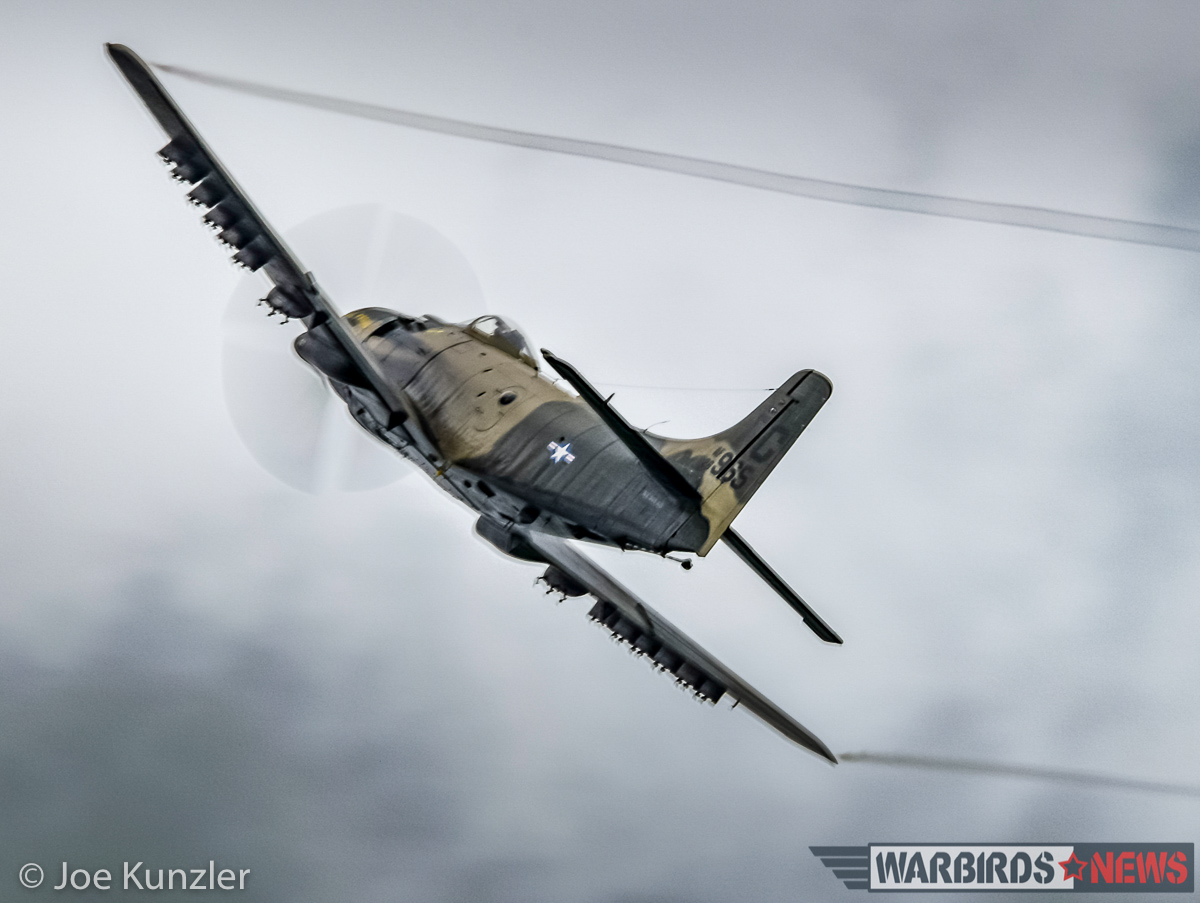
Finally, John Geyman’s British-built deHavilland Canada DHC-1 Chipmunk trainer visited the Heritage Flight Museum during June’s Fly Day event. It is up for sale currently. Built in 1951, the Chipmunk, now registered in the USA as N323WG, served as WG323 with the British Army for more than 40 years. It remains in its original markings and has been hangered for most of its life. Total airframe time is just under 11,500 hours with roughly 600 since the last major overhaul. The Chipmunk has its tail reinforced to keep it almost fully aerobatic. Serious inquiries about the aircraft can be placed with Mr. Geyman at [email protected]. Mr. Geyman was kind enough to let me climb on the wing and take a few cockpit photos:
While the June Fly Day event was not ideal, due to inclement weather conditions, it was still a grand and intimate look at some beautiful warbirds. The museum will be holding several additional Fly Day events this year at monthly intervals with the following dates and themes: July 16th “Veterans”, August 20th “Props and Ponies” (P-51 Mustangs and Ford Mustangs), September 17th the Skagit Regional Airport Community Day, and October 15th “Skyraider”. The museum is also open
——————————————–
WarbirdsNews wishes to thank Joe Kunzler for his latest contribution, and we hope you’ve enjoyed his photography as well.








